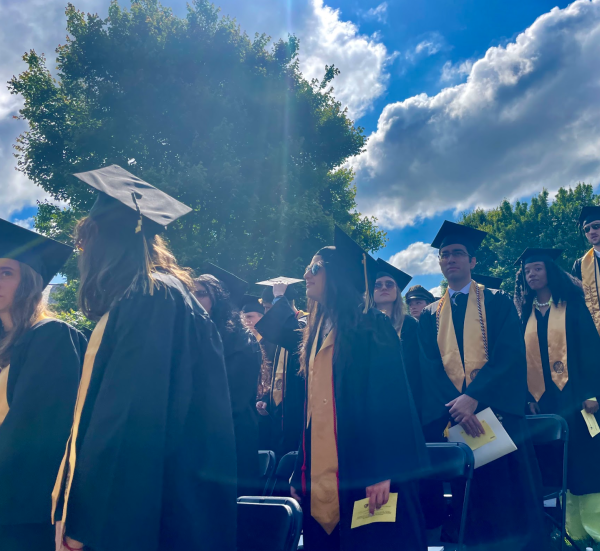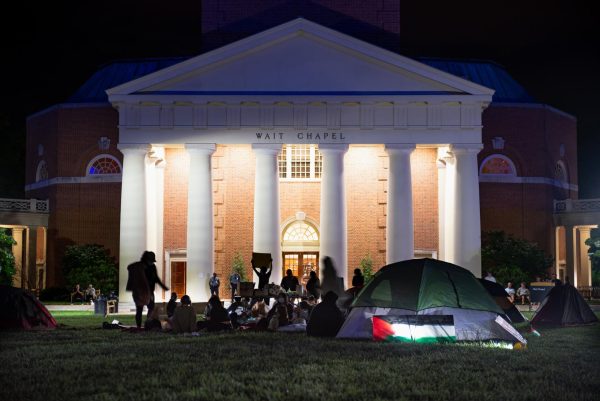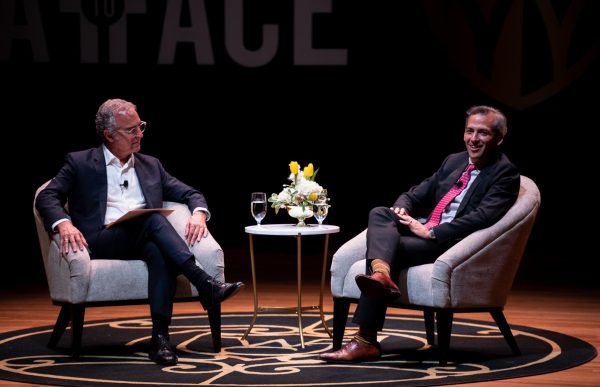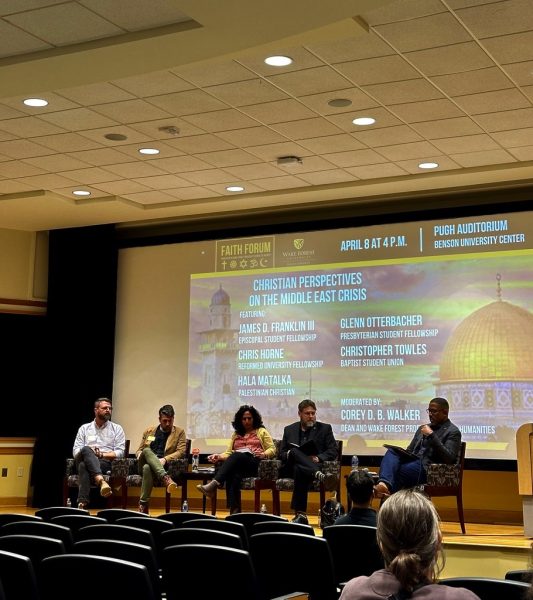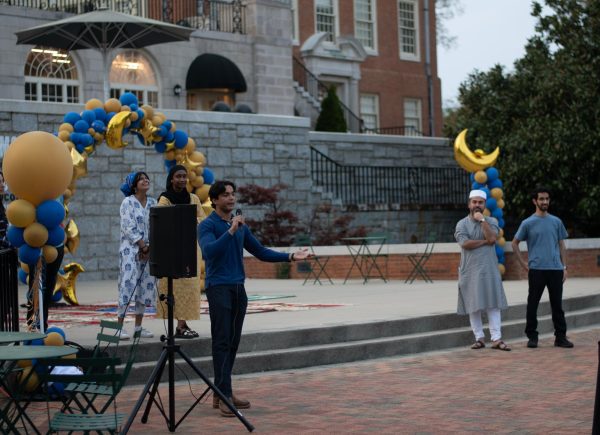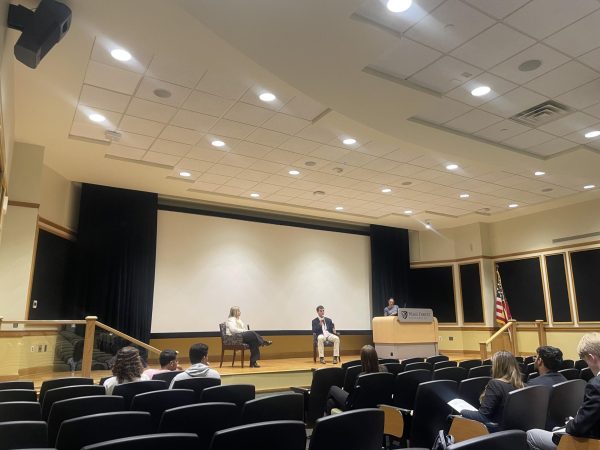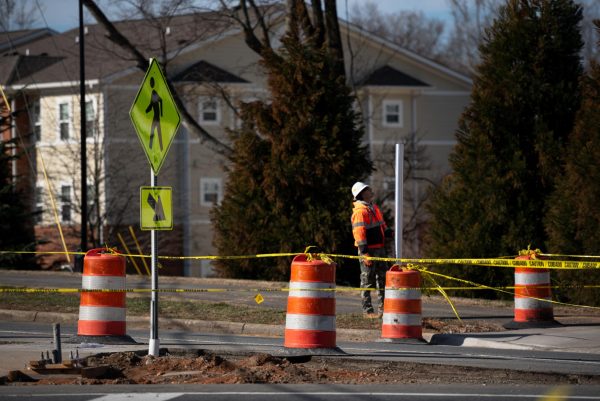Deacon Profile: Sakina Barthe-Sukhera
September 30, 2021
Sakina Barthe-Sukhera is a senior at Wake Forest majoring in Environmental Science and minoring in both Religious Studies and Arabic. Her passion for ecology — as well as her involvement in Campus Garden for two years — inspired her to bring Wake Forest’s Tohi Garden to life. This summer, she worked with the Office of Sustainability to turn the garden into an outdoor classroom in the hopes of sharing this immersive space with students and other members of the Wake Forest community. Her knowledge of indigenous cultures, as well her interest in ecological preservation led her to reach out to the Office of Sustainability and further promote the Tohi Garden.
Why did you become involved in creating a classroom space in Tohi Garden?
I worked at the Campus Garden for the past two years and I’m a senior now so I was looking for something slightly different. I was really interested in learning more about ecology and indigenous perspectives and had known that this was a project that the Office of Sustainability had worked on in the past. I was going to be here at Wake Forest anyways because I was doing an internship over the summer, so at the same time, I said, “Hey, I’m here, do you need any help with the garden? And also, what is this Tohi Garden?”
I got really lucky being able to stay here and know that the Office of Sustainability had these resources that I could work with and learn from. I just kind of put my nose out there and asked.
What is the purpose of the Tohi Garden?
The purpose of the garden was to re-introduce native plants that were culturally important to the Eastern Band of Cherokee Indians. The Tohi Garden is a space that reminds us that all of this land used to belong to indigenous people. The plants that we would consider endemic and native can be used and in fact are still used by people who know and see their value.
What is the significance of the name “Tohi”?
The name “Tohi” was given a few years back; “Tohi” essentially means “unstressed.” One of the goals of the garden is to create a well-balanced environment that is able to have a wide variety of plants, not just one invasive plant. Increased diversity of plants supports better health within the system in general. Each plant can do different things, just like how we can do different things as humans. We have different understandings of the world, and so it’s an acknowledgment of the fact that everything needs to work together and that we can’t just have one way of doing things.
How is the Tohi Garden considered native and what types of plants are grown there?
The Tohi Garden is located in a forested area and includes native plants that can be grown and harvested naturally. It’s a different type of maintenance, but it’s still considered a garden. Native plants are just plants that are endemic and have grown here for centuries, probably thousands of years. What we’ve seen over time, given the rise of cities and human development, is that we’ve started landscaping and putting in plants that we want and that are beautiful. What that means is that native plants that are here aren’t necessarily given as much priority.
We’re trying to reintroduce those plants, especially because they already have an adaptation to the environment. These plants are used to this environment so they can grow — we don’t have to add anything, we don’t have to care for them in any specific way, we just let them do their thing. What we have specifically are a lot of different trees — hickory trees, which make a lot of pecans, maples, oak trees — and blackberry and strawberry plants.
What does the Tohi Garden and sustainable agriculture mean to you and to students?
One of the perks of being on a somewhat small campus is that word can spread really easily between interested parties. I hope, because I’m passionate about it, that students — whether it’s from classes, or just by knowing me and talking to me — start getting excited about the space as well.
In general, I think there are some key aspects I try to bring up consistently, like how we as humans are not separate from our environment, so we should start regarding our environment not as something that’s against us, but something that we can coexist with. Having a tangible, interactive space that students can go to understand balance, mindfulness and connections are so important.
It’s also important to not just think about sustainability as a concept that needs to be “done.” Let’s also be kind to ourselves and take care of our mental and physical wellbeing. I think learning to be sustainable towards yourself and towards the environment is one of the key ways you can take care of yourself and learn about things that are meaningful to you.
How do you hope to grow the garden and involve more members of the Wake Forest community?
We have started reaching out to professors and department chairs, and have let them know that this space exists and that they should feel free to contact me and use it. I encourage this by giving a tour of the space and sharing some of the information I have trying to connect the space to what those departments or classes are covering. My main goal this semester is to fit in as many different classes as I can into this space and have people learn from it and teach in a different way than they would in a typical lecture-style class.
How do you hope to further pursue your passion for the environment and sustainability?
The idea of ecological preservation really resonates with me. The idea that there are environments and ecosystems that are really under stress — due to either humans or to climate — and understanding how everything fits together is really intriguing. My perspective is that of a student doing environmental science at Wake Forest, so I have this idea of looking at different components and trying to piece them together. I am interested in doing ecological reservation in the future and learning if there is anything we as humans can do, or [if we should] just let nature rebalance itself. How do we view our environment and why does this impact the actions that we take?
Editor’s Note: This interview was edited for brevity and clarity.













